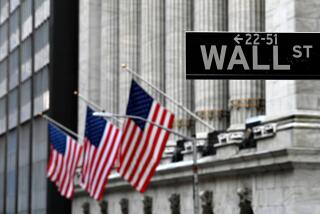Morningstar’s Top-Rated Funds
With more than 10,000 mutual funds to choose from, many investors cringe at the task of making selections. With today’s special quarterly fund report, The Times and independent research firm Morningstar Inc. provide several ways to evaluate funds--including measurements designed to help investors determine a particular fund’s performance not only overall, but also relative to its peers.
The tables on the next three pages list the best-performing funds in each of Morningstar’s major fund categories over the last three years (ended Dec. 31), as determined by the firm’s proprietary rating system. That three-year period includes the bull market surge of 1999 as well as the bear market that began in 2000. Only funds with three years of history are included in Morningstar’s rankings.
Here’s how the funds were ranked:
* First, each fund has a “category rating” (Cat Rtg), a number from 1 to 5, with 5 being the best. This rating represents Morningstar’s assessment of how well the fund achieved its three-year returns relative to the amount of risk it took, compared with its category peers.
* Second, within each category rating score (e.g., first the 5s, then the 4s, etc.) funds are ranked by actual three-year performance within the category as a whole, expressed as a percentile figure (1 to 100, with 1 being best). That is the “three-year rank” column. For funds with multiple classes (i.e., A and B shares, etc.) only the best-performing class is included. To determine order, ties in the first two columns were broken by manager tenure.
* The more familiar Morningstar three-year “star” rating appears in the third column. The number of stars (again, on a scale of 1 through 5, with 5 being the best) is an assessment of performance and level of risk for that fund compared with its broader group: domestic stock funds, international stock funds, taxable bond funds or tax-free (muni) bond funds. See more detailed information below.
A word about categories: Morningstar does not categorize funds based solely on a fund’s self-description. Rather, it also looks at each fund’s actual holdings to determine category.
The largest groups of funds are domestic equity funds, which Morningstar organizes by the average size (market capitalization) of stocks owned and by a fund’s general investment philosophy. These appear on the next page, followed by rankings of bond funds and sector funds on pages U10-11.
General performance data on the 4,500 largest mutual funds, listed by family name from A to Z, appear on pages U12-14. Also listed are funds’ telephone numbers, most of which are toll-free. (Note: Some top-rated funds in Morningstar’s tables may not be among the 4,500 largest in the A to Z tables.)
*
Morningstar Top-Rated Funds
(tabular data not included)
More to Read
Inside the business of entertainment
The Wide Shot brings you news, analysis and insights on everything from streaming wars to production — and what it all means for the future.
You may occasionally receive promotional content from the Los Angeles Times.









